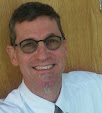New York : Atlantic Monthly Press, c2011.
xii, 256 p. ; 22 cm.
I bought this book after reading a positive review of it in Leatherneck, the magazine of the US Marines. I was interested in it since the author had been a US Marine in Vietnam and a Rhodes scholar and a novelist. Anyone who knows me, knows that I'm really very opposed to war, except as a last resort and have no interest in books that romanticize or glorify combat.
This book is a thoughtful, honest account of the experience of deadly combat on a young, intelligent person. The author takes exceptional pains to be honest about his behaviors, motivations, fears, successes, and what he as learned of war and combat through both experience and study. He is not interested in glorifying combat or vilifying enemies that the US has waged war with. His goal seems to be to try to convey what the life-altering and profoundly destructive nature of war is like to anyone who will read his book.
Whatever one's opinions are on the military adventures of the United States, anyone working with young people knows that many of the students we work with choose the military as an option after high school or are considering it as an option. With that in mind, a book such as What It Is Like to Go to War would be a very beneficial book to get into the hands of any thoughtful student who wants to wrestle with the idea of war and his or her possible participation in war or who asks if there is an account of what war is like.






